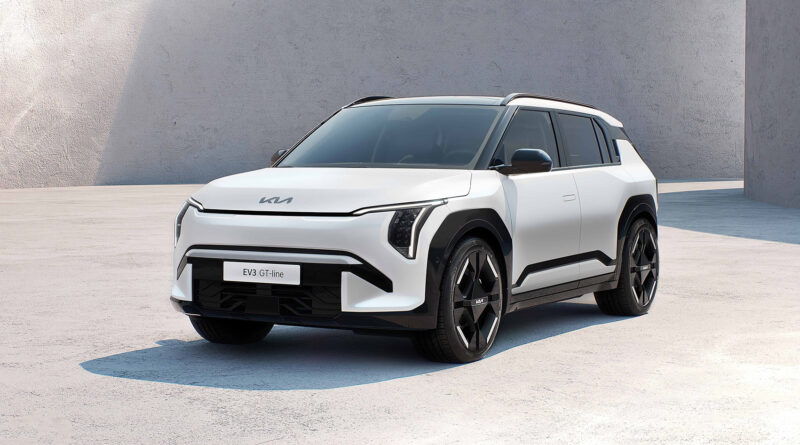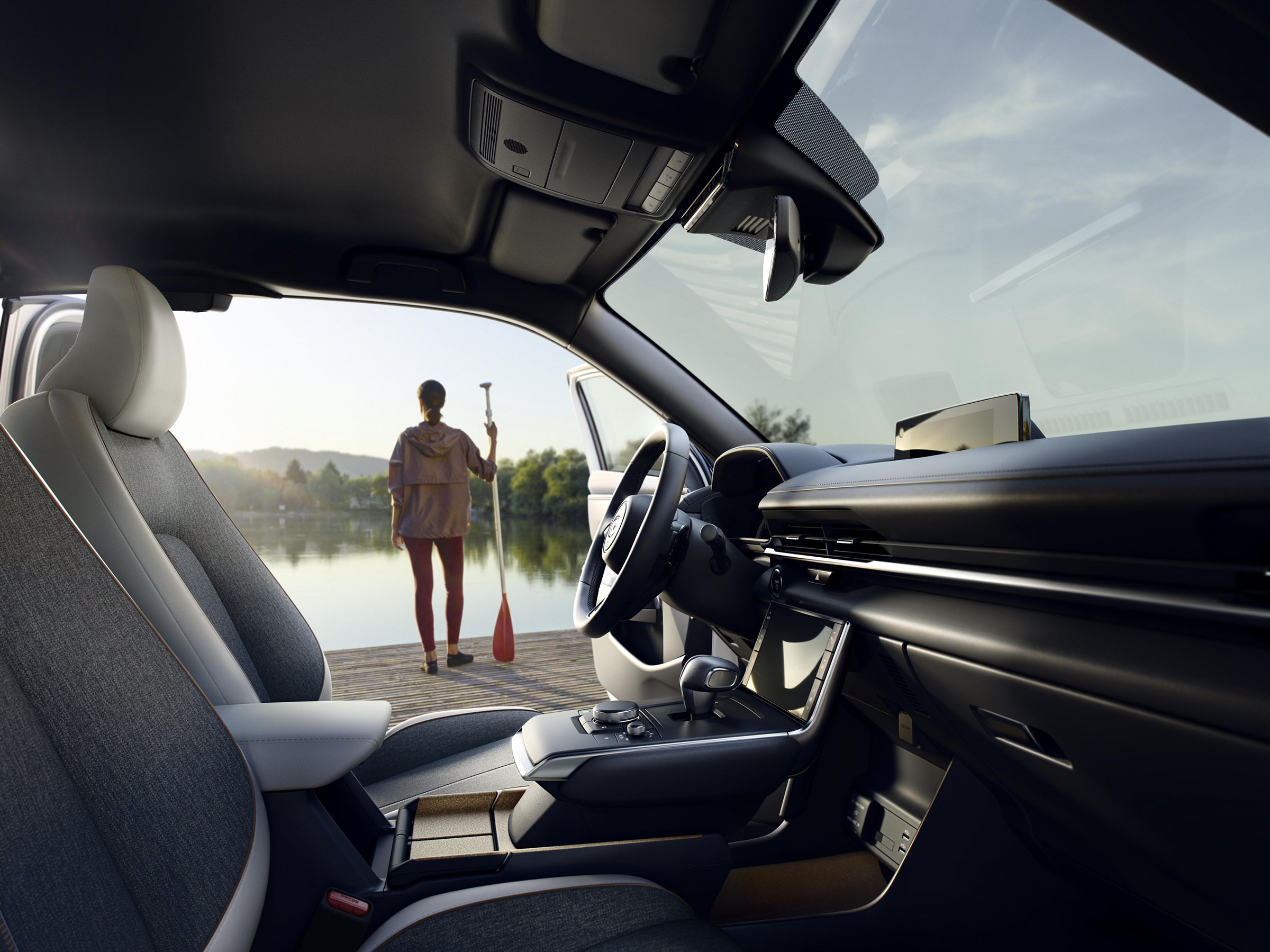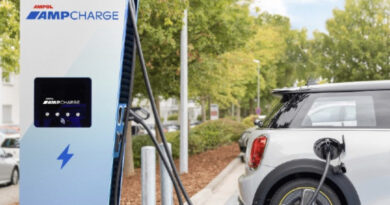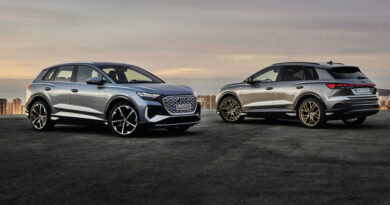Is this Kia’s Tesla and BYD beater at last? New Kia EV3 electric SUV to cost from $50,000 and deliver 600km in range in Australia
Kia has unveiled its EV3 compact SUV ahead of a confirmed Australian arrival in 2025.
Looking every inch a baby EV9, it’s set to be priced around $50,000 to challenge the Tesla Model 3, BYD Atto 3, MG4 and ever-expanding electric opposition.
The pint-sized boxy EV3 goes on sale in Korea this July, followed by a European rollout later in 2024. Kia Australia would only confirm it would “launch in Australia in 2025,” but the above timings hint it would be early next year.
While its price will be key to its Australian success, the EV3 boasts specification, features, innovation and – let’s be honest – serious cool factor, to suggest it’ll be a serious player on our EV landscape.
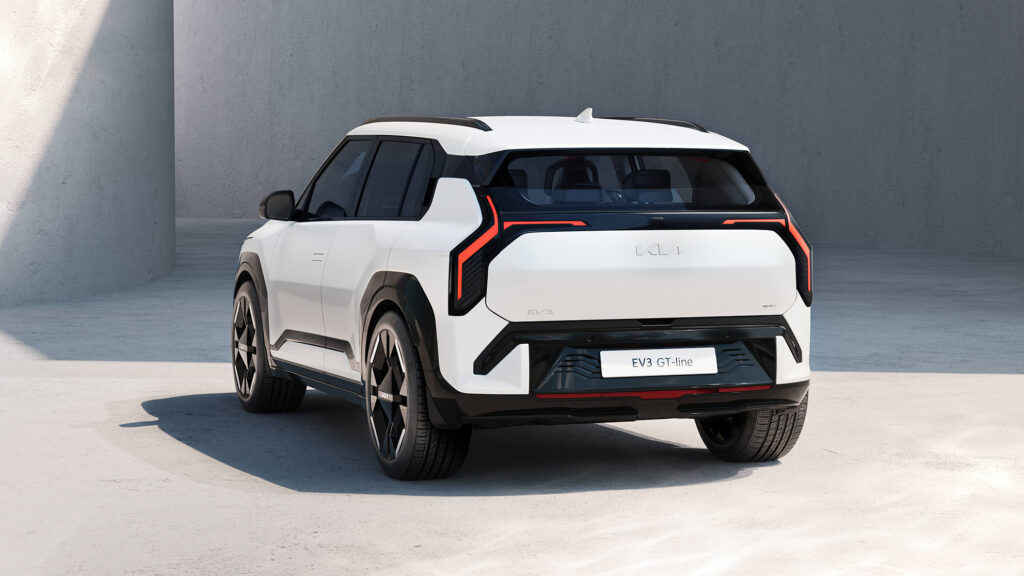
That includes a WLTP range up to 600km, V2L charging, a near-30-inch widescreen display, AI assistant, OTA updates, streaming services, advanced driver aids and the ability to personalise the dash and infotainment through the Kia Connect Store.
READ MORE: Tesla Model 3 slashed to just $54,900 plus on-roads
READ MORE: Volvo EX30 review: $59,990 small SUV EV full Australian test
READ MORE: Kia to launch 15 new EVs in the next three years
What are the Kia EV3’s vitals?
We digitally attended the EV3’s online world premiere, so sadly haven’t been able to enjoy a proper poke around the new EV in the metal.
It’s Kia’s smallest EV (beneath the Niro, upcoming EV5, EV6 and EV9), measuring 4300mm long, 1850mm wide, 1560mm high and with 2680mm wheelbase.
Kia’s popular Seltos combustion small SUV, for reference, measures 4385mm x 1800mm x 1630mm, and has a 2630mm wheelbase.
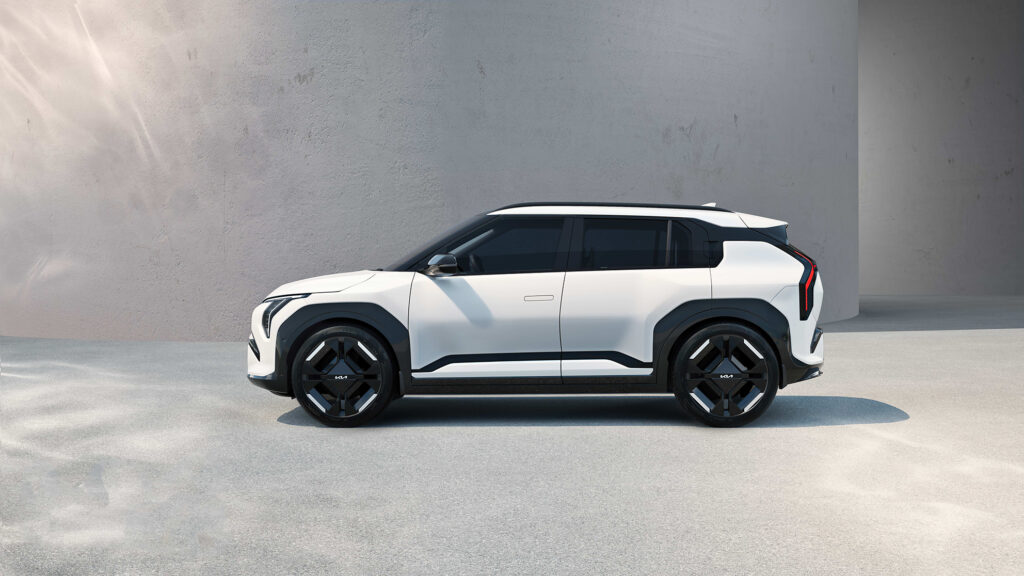
The EV3 is slightly smaller than Kia’s Niro EV, which is 120mm longer, 10mm higher and with 40mm longer wheelbase. But the EV3’s boxiness makes it 25mm wider than big brother Niro.
It’s built on Kia’s front-wheel drive EV-specific E-GMP platform running 400 volts (not the 800 volts of the EV6 and EV9). It will be offered with a standard range 58.3kWh battery or as a long range with hulking (for a small SUV) 81.4kWh battery.
Kia estimates the big battery – plus impressive drag coefficient of 0.263 – means a WLTP range up to 600km. That’s close to the 629km claim of Tesla’s Model 3 AWD Long Range, while thumping the 480km of BYD’s Atto 3 Extended Range, and 505km from Hyundai’s Kona Electric.
No matter the battery, the EV3 uses a 150kW/283Nm electric motor driving the front wheels, with claimed 0-100km/h at a sensible 7.5-seconds. Top speed – sorry autobahn fans – is 170km/h.
Kia confirmed a dual motor GT version would be available in future, but gave no specific timing.
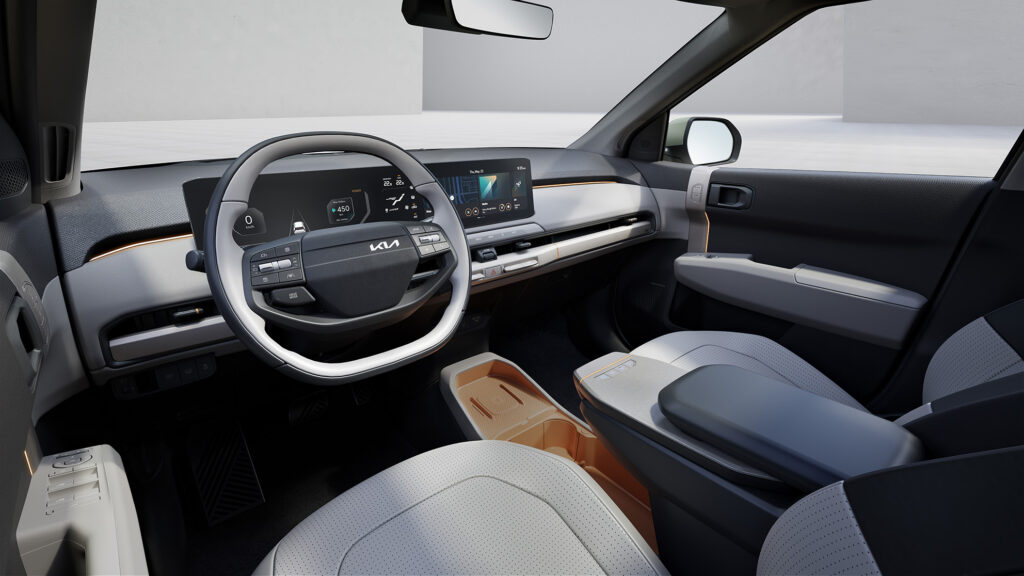
When asked why the single motor EV3 was front-wheel-drive rather than rear-wheel-drive, Kia said it was “a better fit for entry-level SUV customers,” and was favourable from a weight perspective.
Charging speed wasn’t revealed, but quoted time to go from 10-80 per cent battery using a public DC fast charger was 31 minutes.
How are the EV3’s design and goodies?
Exact Australian specification will be revealed closer to launch, but it’s likely we’ll receive Base/Air and GT-Line grades, with choice of normal or long range battery.
The EV3’s design has thankfully stayed true to the concept pictures, meaning it’s a fun-sized EV9 equivalent.
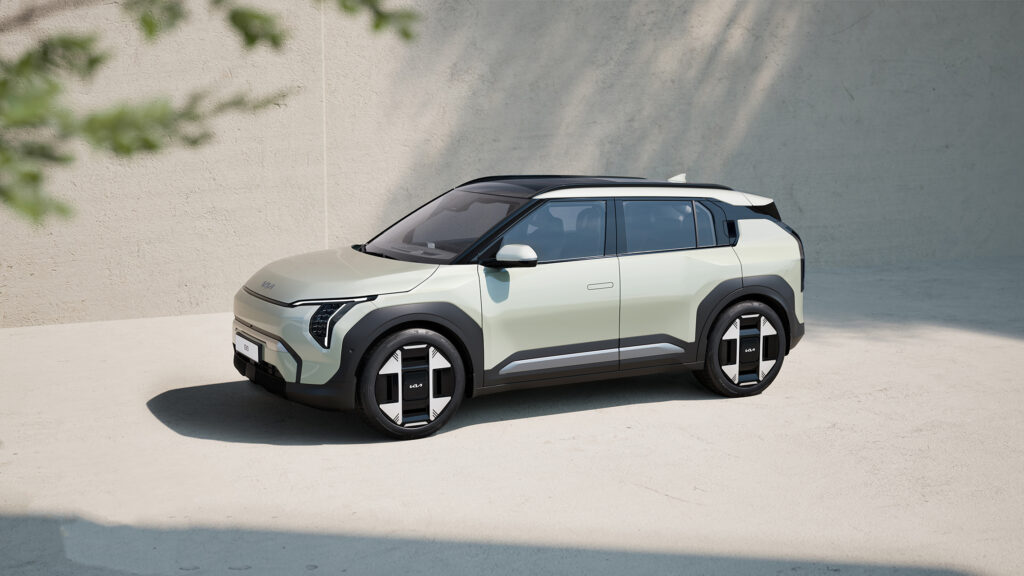
Its clean face sports vertical headlamps at its extremities incorporating Kia’s ‘Star Map’ bundle of lights, plus skinny, vertical, daytime running lights. The rear has EV9-like geometric LED lights integrating with the rear glass.
It’s a boxy thing from the side with sloping roof at the back, while octagonal-type wheels and pop-out door handles give a Blade Runner-type aesthetic.
We’re promised a choice of nine colours, including new-for-EV3 Aventurine Green and Terracotta.
Just how well Kia has packaged the EV3 will determine its suitability as a family car. No specific cabin dimensions were revealed, but Kia’s launch included footage of its designer showing off rear leg and head room. It looked cosy, and not quite “comfortably accomodating five people” as Kia’s PR blurb insists.
The cabin looks damn good. Not least its standout near-30-inch widescreen display. This all-in-one panel incorporates a 12.3-inch driver display, five-inch air conditioning panel and another 12.3-inch infotainment screen.
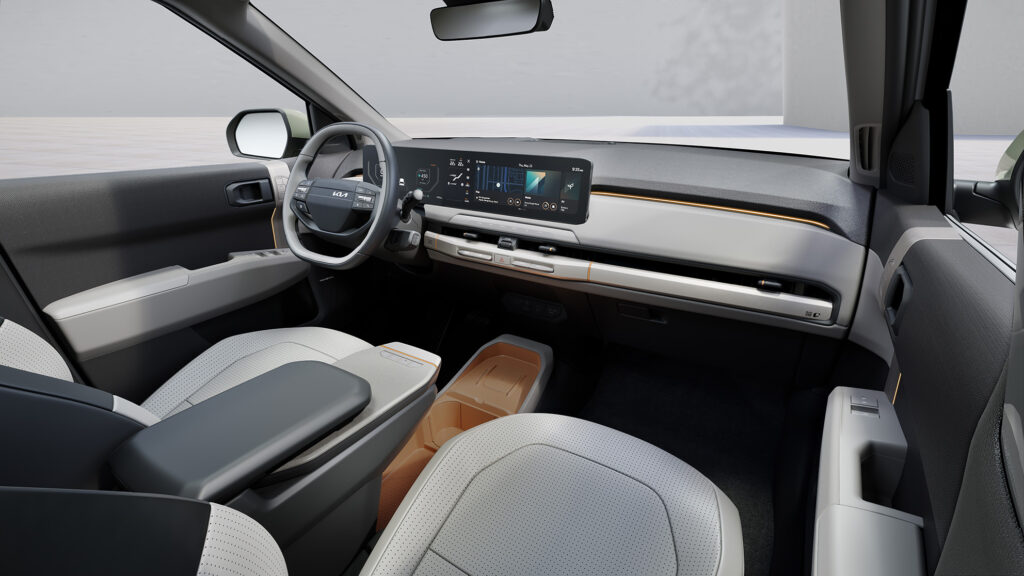
While many of us would prefer physical buttons and dials for the climate, at least having this heating/cooling panel permanently on display should make control easier than ploughing through screen menus to get the fans blowing.
Beneath the centre screen is a row of buttons for “various functions like mapping, media and vehicle system configuration.”
The centre console looks smart and roomy, and incorporates a sliding table to use a laptop (or set out the picnic) when you’re charging. Beneath this is a substantial storage area for snacks, drinks and – we’re promised – small backpacks.
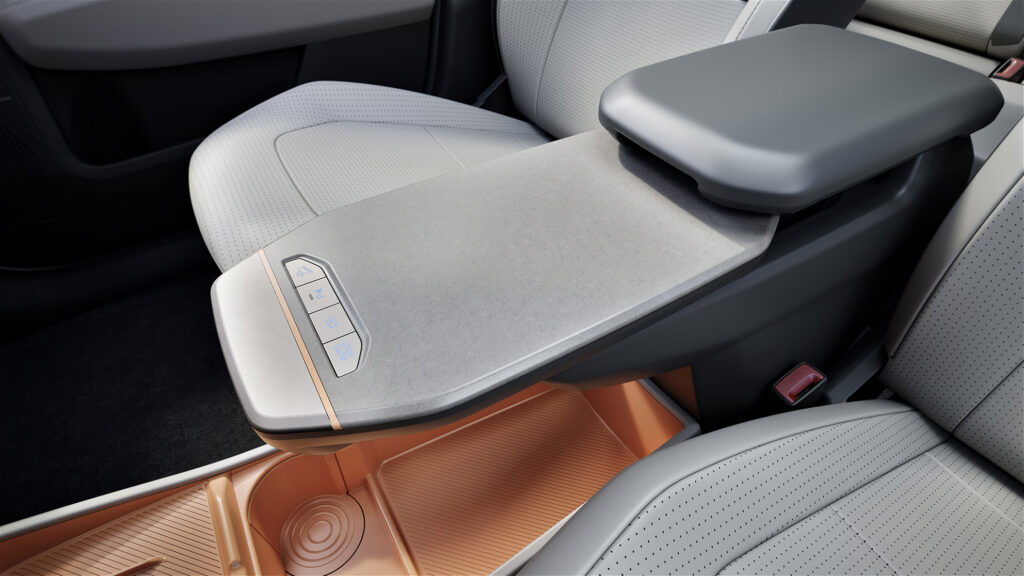
There’s multi-adjustable ambient lighting and the seats have a fold-back ‘relaxation’ mode; presumably for some shut-eye while charging.
A selection of interior colours are offered – including grey, blue and black – while Kia’s made use of recycled fabric for the dash and door trims and recycled plastic (PET) in parts of the seats, headliner, armrests, garnish, floor mats and parcel shelf.
The GT-Line features synthetic leather, so one would assume there’s less of the recycled goodness used here.
Space-wise there’s a 460L boot (Kia claims largest in class here), plus a 25L frunk. Kia’s Niro EV is only marginally larger at 475L.
What are the EV3’s technology highlights?
It’s the first compact EV SUV to score Vehicle-to-Load (V2L) charging, where owners have a power point to charge an e-bike or laptop, or power a small fridge and coffee machine.
Also featuring is Kia’s Digital Key 2.0 where your smartphone or smartwatch replaces a physical car key for unlocking and starting.
It’s the first Kia EV to feature AI Assistant technology. Here, we’re promised a ‘human-like assistant to support travel planning while guiding customers to enjoy optimum benefits from the vehicle’s functions, including entertainment and information search.’

Speaking of entertainment, there’s streamable content through Kia’s Premium Streaming service. For those who understand, it’s delivered via LG’s Automotive Content Platform powered by webOS. For the rest of us, it’ll hopefully mean we can watch Netflix, Prime or Kayo while charging.
And to target a younger demographic (and those who’ve got addicted to Tesla’s offering) the EV3 has arcade games for a spot of in-car gaming. Hopefully not when driving.
Other goodies included a Harman Kardon sound system, a 12-inch (!) head-up display, remote smart parking while you’re outside the car, and personalisation of the dash and infotainment system.
An example of this personalisation, through the Digital Connect Store, sees owners picking NBA team-inspired Display Themes to showcase the team’s graphics and animations. No word if our Aussie EV3s will allow likewise in Collingwood and Geelong colours.
Safety tech looks deep. There’s auto emergency braking front and rear, lane keep, Highway Driving Assist and Kia’s eDTVC (electric dynamic torque vectoring control) to no doubt help this little EV corner with some talent.
How much will the EV3 cost, and what about Kia’s other EVs?
The influx of cheap Chinese EVs and their ongoing price war, then Tesla’s aggressive Model 3 and Model Y discounts this month, make the Kia EV3’s price more important than ever.
A Tesla Model Y RWD’s now just $55,900 – a much larger, more spacious SUV – so would mean an EV3 entry price under $50,000 should be needed to make it look value.
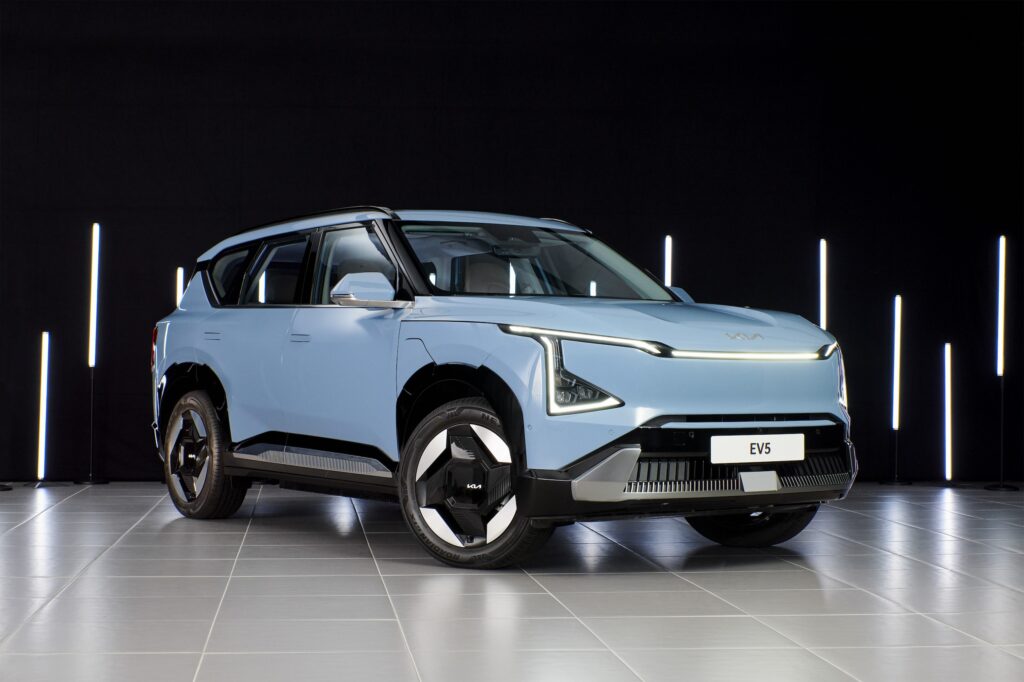
Kia President and CEO Ho Sung Song said the EV3’s target price was “between $35-50,000” (US dollars), which translates to between $53-75,000 on our market, at current exchange rates.
Kia’s current cheapest EV is the Niro small SUV, starting at $66,590 before on-roads.
At the EV3’s reveal, Kia confirmed Niro EV production would continue despite the new car’s arrival, although it would be retained specifically for its hybrid appeal.
Kia’s boss said: “We will continue to sell the Niro EV together with the EV3 in the market (but) we expect the EV3 will be for the EV dedicated customers, and Niro will be more weighted for hybrid customers.”
Kia’s EV5 electric medium SUV launches in Australia in a matter of weeks, and its pricing will no doubt dictate the EV3’s.
Tesla’s Model Y price slashing has put Kia in an awkward spot, as earlier this year Kia Australia stated the EV5 would undercut Model Y pricing. That was, of course, before some $9000 was sliced from the Tesla’s RRP.
A smaller Kia EV2 won’t be coming to Australia, while an EV4 sedan’s also on the cards for 2025. Last month the brand announced it will roll out 15 new EVs from now until 2027.

